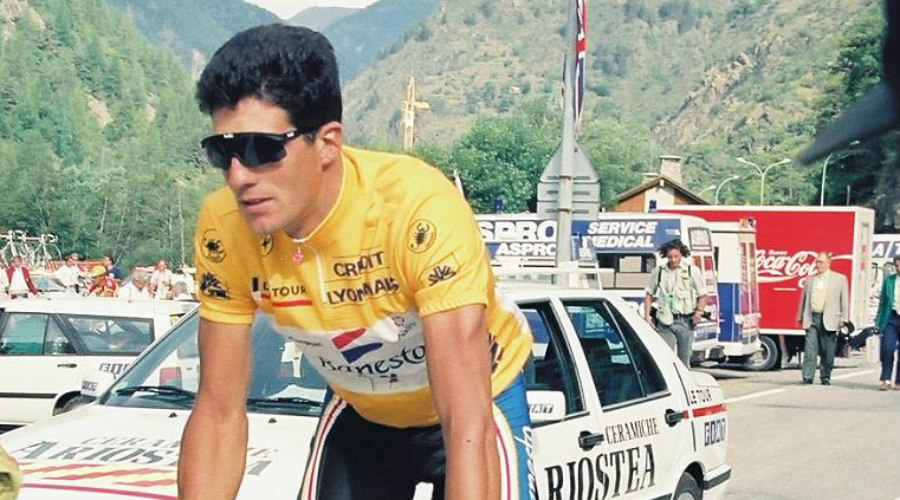
Pau Gasol, with crutches, celebrating the first World Cup in the Spanish basketball team in Japan. Rafa Nadal shaping the Roland Garros sand 10 times. Íker Casillas raising the World Cup in South Africa, surrounded by an unrepeatable soccer team ...
The collective memory of Spanish sport is full of iconic images. When you think about cycling, that image soon arrives; Miguel Induráin dressed in yellow on the podium of the Elíseos fields of Paris.
Behind that photograph there is a trail of legendary deeds that keep Navarro at the top of the history of sport. But, of all of them, what are the 5 exploits of
Miguelón that cycling fans can't get out of their heads?
1. The deed of the five mountain ports (1991)
If there was a stage that marked the first Tour of France in Induráin, it was the 12th, in which no less than five mountain ports were climbed: Poustlet, Aubisque, Tourmalet, Aspin and Val Louron.
Then Pedro Delgado was still the head of ranks of Banesto and Miguel Induráin was not so well known among the general public. But the situation would turn a complete turn that day. In the descent of the Tourmalet he escaped with Claudio Chiappucci. Neither Greg Lemond, nor Laurent Fignon, nor Luc Leblanc were able to follow their stelae.
When they subtracted 60 kilometers for the goal, the Navarro Gigantón pressed his teeth and marked a sprint of 2,115 meters in descent that annihilated the Italian.
The devil It was thoroughly used to try to reach the Spanish, which a short distance from the goal agreed with him to give him the stage victory as gratitude for helping him to dress yellow. It was the beginning of myth.
[capt
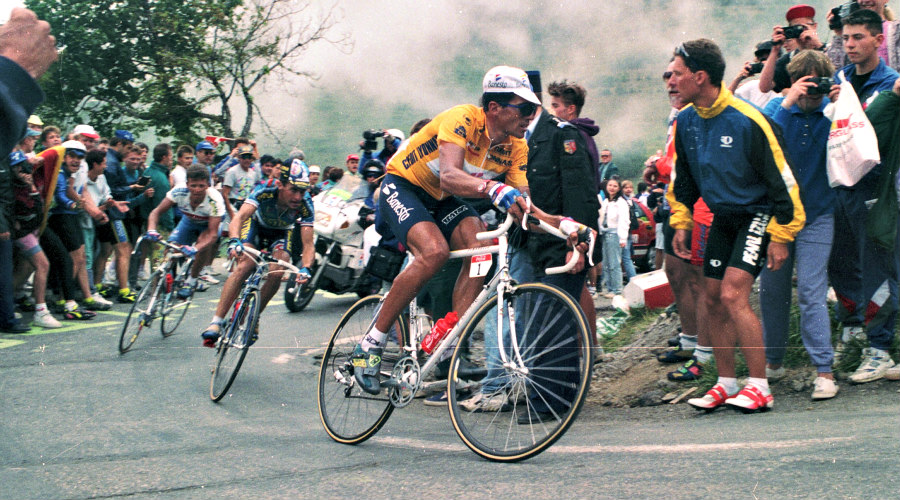
Photo credits: Denp images (Creative Commons)[/caption]
2. Face to face with Chiapucci in Sestriere (1992)
In 1992 Miguel Induráin was no longer a promise of cycling or revelation, but the brand new winner of the previous tour and the firmer candidate to revalidate the hindering.
His rivals respected him and feared in equal parts. The Italians Gianni Bugno and Claudio Chiappucci were their two main adversaries.
Bugno was more conservative, but the style of
The devil It was that of an aggressive cyclist, who went out for all as soon as he saw an auspicious chance. He made it clear in the 13th stage, high mountain, with final in Sestriere.
At 50 kilometers from the departure, the Italian attacked with virulence and remained alone during 200 tortuous kilometers. The only one capable of following his wake was the Spanish, who in the end would reach 2 minutes from him.
Greg Lemond would have to retire the next day and the Italian getaway would leave a trail of uncabalized cyclists from the general, many more than 40 minutes. Despite the second place, Induráin's endurance earned him yellow and demonstrate that his ability to suffer was supernatural.
[capt
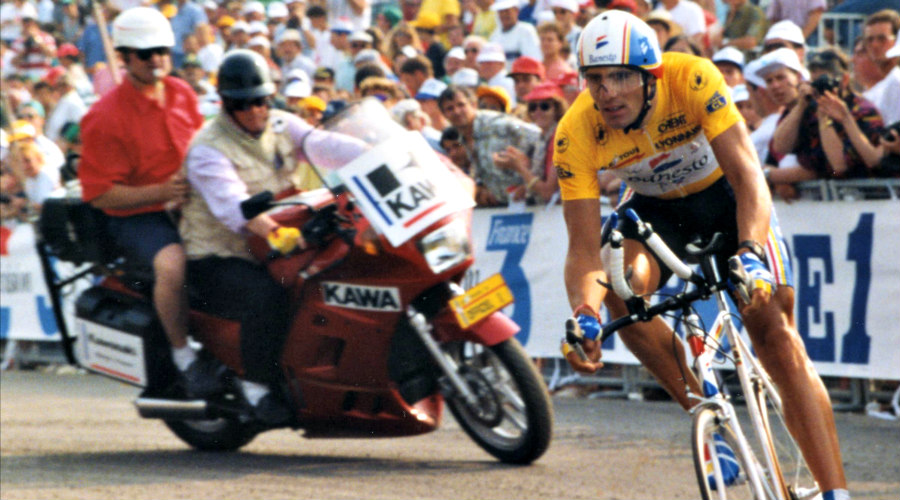
Photo credits: Eric Budas (Creative Commons License)[/caption]
3. The brutal counterreloj of Périgueux-Bergerac (1994)
Deciding which was the best counterreloj of Miguel Induráin is a complicated task. But the page that left Navarro on July 11, 1994 is one of the most unforgettable.
He
alien - As the French press had already baptized - he had ahead of the challenge of snatching the yellow jersey to the Belgian Johan Museeuw, circumstantial leader, and incidentally put minutes to his direct rivals, the Rominger, Bugno, Zülle or Pantani.
He achieved both things. With 40 degrees in the thermometer, what left its pedals was an epic feat. Rominger put 2 minutes, Chris Boardman more than 5, Zülle 9:03, Bugno 10:37 and Pantani 10:59. A barbarity within the reach of very few.
[capt
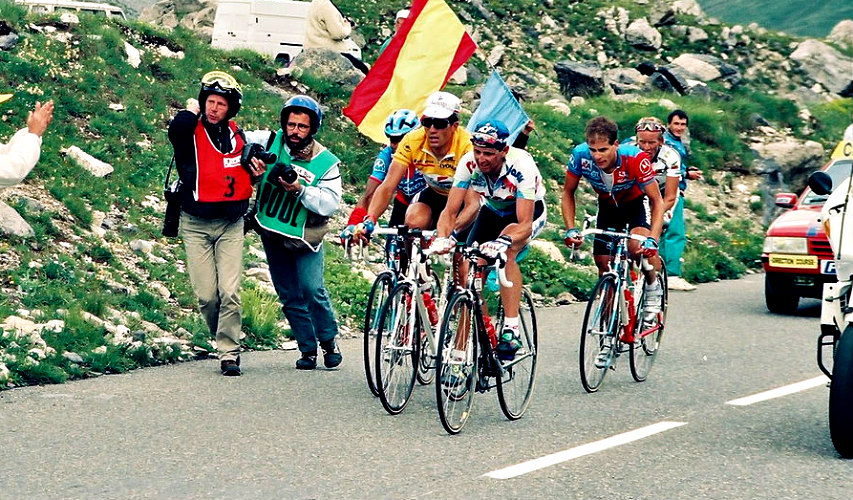
Photo credits: Ta_do (Flickr, Creative Commons License)[/caption]
4. The record of the time ... or how to break the laws of physics (1994)
If anyone could face one of the most technical and demanding evidence of modern cycling, the record of the time, that was Miguel Induráin. On September 2, 1994, he succeeded in completing 53.04 kilometers in 60 minutes. Thus exceeded the 52.71 kilometers achieved by the British Graeme Obree that same year.
Obree, in turn, had sent the previous best record, which was worked in the hands of Chris Boardman (52.27 kilometers).
The Velodrome de Bordeaux witnessed the heroicity of Spanish, which left for the history books its stamp on the back of a very special bicycle: the sword. Pinarello was manufactured to measure applying advanced technology in aerodynamics and advances from formula 1.
Manufactured in one piece of carbon fiber, it weighed 7.2 kilos and looked lenticular wheels, the rear with greater diameter than the front. Tony Rominger soon beat later, twice, the Navarro brand (53,83 and 55.29 kilometers), but his feat was another sample of his imposing domain in the world cycling scene.
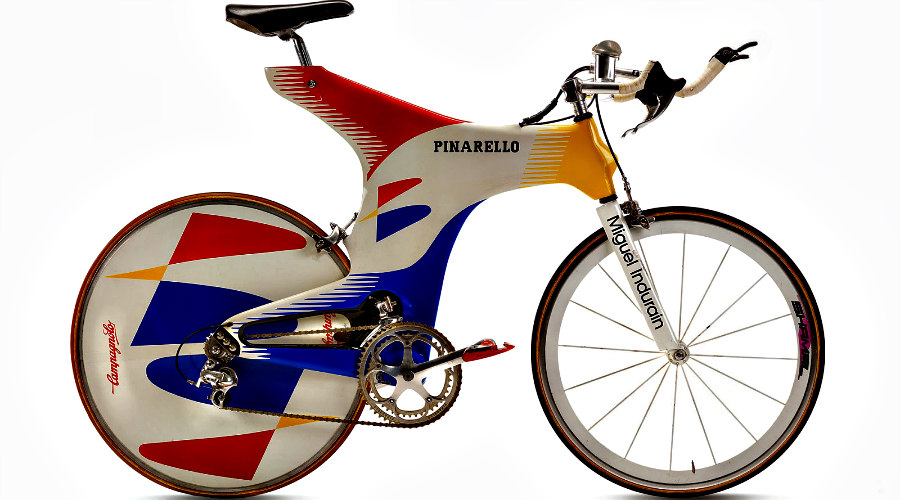
5. Neutralization of Zülle's attack in La Plagne (1995)
In 1995, the big question was whether Induráin would be able to live up to the giants of history who already had 5 tours: Jacques Anquetil, Eddy Merckx and Bernard Hinault. None of them had achieved them consecutively.
The list of candidates to snatch the record was printing, with Alex Zülle at the head, followed by Bjarne Riis, Tony Rominger and Richard Virenque. In the ninth stage, between Le Grand-Bornand and La Plagne, when the Spanish was already dressed in yellow, Alex Zülle opened an advantage of more than four and a half minutes with which he became a new leader. He had also achieved it in full beginning of the rise to the plagne, which seemed hard to answer.
With a rhythm of brutal pedaling, Induráin put on the work monkey and, without moving a single more muscle, with that poise that characterized him, he was undermining the advantage of the Swiss until he would ensure that he could not snatch the yellow jersey. The rest of the tour was already a military ride.
 Pau Gasol, with crutches, celebrating the first World Cup in the Spanish basketball team in Japan. Rafa Nadal shaping the Roland Garros sand 10 times. Íker Casillas raising the World Cup in South Africa, surrounded by an unrepeatable soccer team ...
The collective memory of Spanish sport is full of iconic images. When you think about cycling, that image soon arrives; Miguel Induráin dressed in yellow on the podium of the Elíseos fields of Paris.
Behind that photograph there is a trail of legendary deeds that keep Navarro at the top of the history of sport. But, of all of them, what are the 5 exploits of Miguelón that cycling fans can't get out of their heads?
Pau Gasol, with crutches, celebrating the first World Cup in the Spanish basketball team in Japan. Rafa Nadal shaping the Roland Garros sand 10 times. Íker Casillas raising the World Cup in South Africa, surrounded by an unrepeatable soccer team ...
The collective memory of Spanish sport is full of iconic images. When you think about cycling, that image soon arrives; Miguel Induráin dressed in yellow on the podium of the Elíseos fields of Paris.
Behind that photograph there is a trail of legendary deeds that keep Navarro at the top of the history of sport. But, of all of them, what are the 5 exploits of Miguelón that cycling fans can't get out of their heads?
 Photo credits: Denp images (Creative Commons)[/caption]
Photo credits: Denp images (Creative Commons)[/caption]
 Photo credits: Eric Budas (Creative Commons License)[/caption]
Photo credits: Eric Budas (Creative Commons License)[/caption]
 Photo credits: Ta_do (Flickr, Creative Commons License)[/caption]
Photo credits: Ta_do (Flickr, Creative Commons License)[/caption]













